What is TeamViewer and how does it work?
TeamViewer is a remote access software tool that shares your computer's screen to another person, creating a mirror-like experience. Once the access is granted, that person can use the program to work on your computer from afar, as if they were seated in front of the machine: observe the screen output, interact with the mouse or keyboard, install and run applications, adjust system settings, perform diagnostics and other tasks. Such functionality enables IT teams to provide solutions for their customers without the necessity of physical on-site presence. The software can also be used to hold online meetings, send messages and transfer files. Thanks to the customizable permissions, you are free to decide on the level of access and restrict any specific actions the "remote" user may take.
TeamViewer is available for Windows, macOS, Linux and other platforms. The connection can be set up between various types of devices, including desktop computers, laptops, servers, tablets and smartphones, on condition that they have stable internet access and TeamViewer installed.
The program operates by providing a unique 9- or 10-digit number that will be bound to your particular computer. It is known as TeamViewer ID and acts as the computer’s identifier within the TeamViewer network. You also get a separate unique password that changes by default when you terminate a connection session. These credentials serve as a gateway to your device. You need to share them with the potential "remote" user for them to be able to initiate a session:
-
To begin with, that person enters your TeamViewer ID into the software, and this creates a secure tunnel between the two devices, enabling encrypted communication. The entered ID is passed through that tunnel to your device;
-
Once received, your device prompts the "remote" user to enter the associated unique password;
-
After they enter the correct password, the connection is established, allowing that user to view and manage your device;
-
When you close TeamViewer, the connection is terminated, and the "remote" user can no longer access your system.
Please note that the TeamViewer ID assigned to your device always remains the same, even after you reinstall or update the software. In contrast, the password is dynamic and generates after each restart. If you prefer to keep the same password across multiple sessions, you may set a static password. However, this should be done with caution, since anyone who knows your TeamViewer ID and that static password may access the device whenever TeamViewer is running.
Is it safe to use TeamViewer?
TeamViewer is a reputable application with the nearly two-decade history and millions of users worldwide. In itself, it does not contain any threats to your device. Moreover, it ensures the security of the transmitted information by using AES 256-bit encryption, which is widely recognized as a high-quality standard. Along with that, it offers additional safety features you can activate for enhanced protection:
Two-factor authentication. The software supports two-factor authentication, which adds another layer of security beyond the user password. When enabled, it will require to enter a secondary verification code sent to another device, for example, to your smartphone.
Password reset. It is possible to configure the program to initiate a password reset in the event of a suspicious activity. Such a measure allows preventing unauthorized access to the system in a situation when your credentials have been compromised.
Trusted devices list. You can control which devices are able to establish connection with your system by creating a whitelist of trusted devices and permit access only for ones that are present on that list.
Security settings. You may further strengthen TeamViewer’s security by customizing other settings within the software, like access permissions, notifications, logs, automatic recording, etc.
However, like any remote access software, TeamViewer should be used responsibly, as it may sometimes be misused by malicious actors. You need to follow these best practices in order to minimize any potential security risks:
-
Keep TeamViewer closed when it’s not actively in use to eliminate the opportunity for unauthorized individuals to attempt to access your system.
-
Whenever possible, use the TeamViewer's dynamic password feature to have unique access credentials for each session. In case you set a static password, come up with a strong one and update it regularly. Avoid sharing this password with any third parties.
-
Be wary of scams that may involve TeamViewer or other similar software. Before sharing your credentials, verify the person or organization making the request. Don’t respond to unexpected requests made through unsolicited messages, emails or other communication channels.
TeamViewer in the context of data recovery
Overall, TeamViewer serves as a valuable tool in the data recovery process. It allows an expert to efficiently diagnose your data loss case and perform the due operations to recover the lost files. Meanwhile, you don’t need to wait for a specialist to arrive on-site or send the affected equipment to the service provider company. When combined with proper data recovery tools, it is perfect for addressing various software-related problems, accidental file deletion, storage formatting, data corruption and other logical mishaps.
However, it's important to note that not all scenarios are suitable for remote recovery via TeamViewer. It cannot be applied to cases where data loss is associated with hardware failures or other physical issues within the storage device. Problems with physical components require actual intervention, made in cleanroom facilities with the assistance of specialized equipment. That is why you should be aware about these limitations and always seek in-lab services when physical issues are suspected.
How to install and use TeamViewer
Installation and setup
TeamViewer has a simple intuitive design making it accessible to users of all technical levels. Getting started with the software is straightforward and can be done with just several clicks from your side. Let’s review the basic steps to be taken:
-
Visit the official TeamViewer website and download the version of the TeamViewer remote client that corresponds to your operating system.
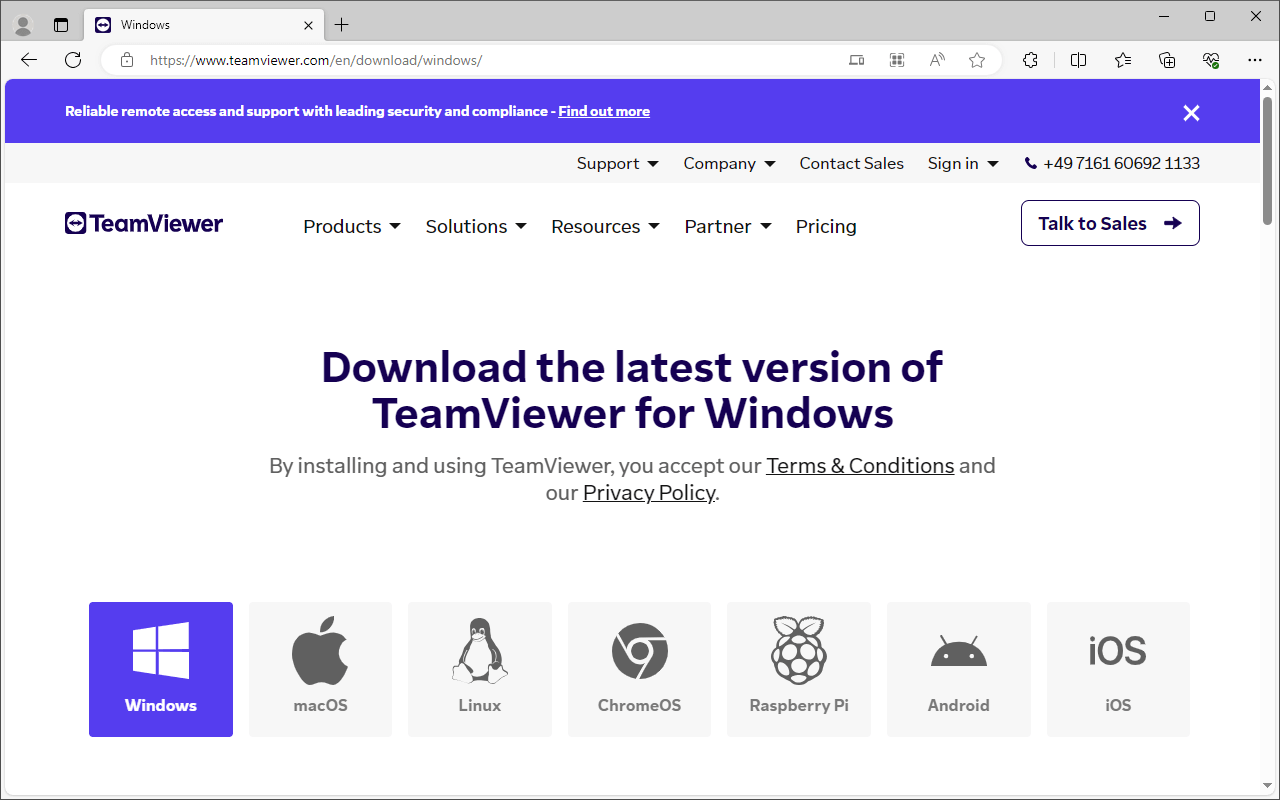
-
Click on the downloaded file and follow the on-screen instructions to install TeamViewer onto your computer.
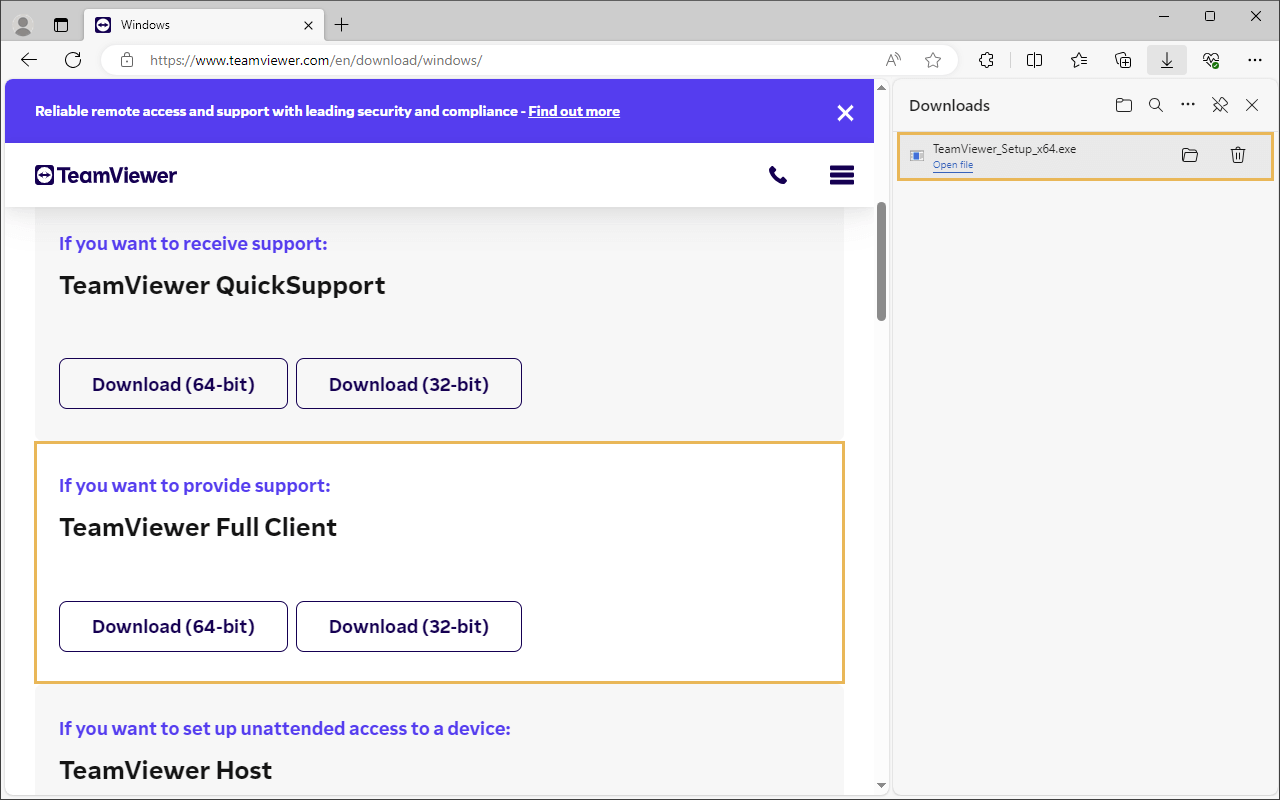
-
Launch the installed application. You may create a TeamViewer account to utilize the advanced software features or proceed with the limited version, if you’re planning just one-time usage.
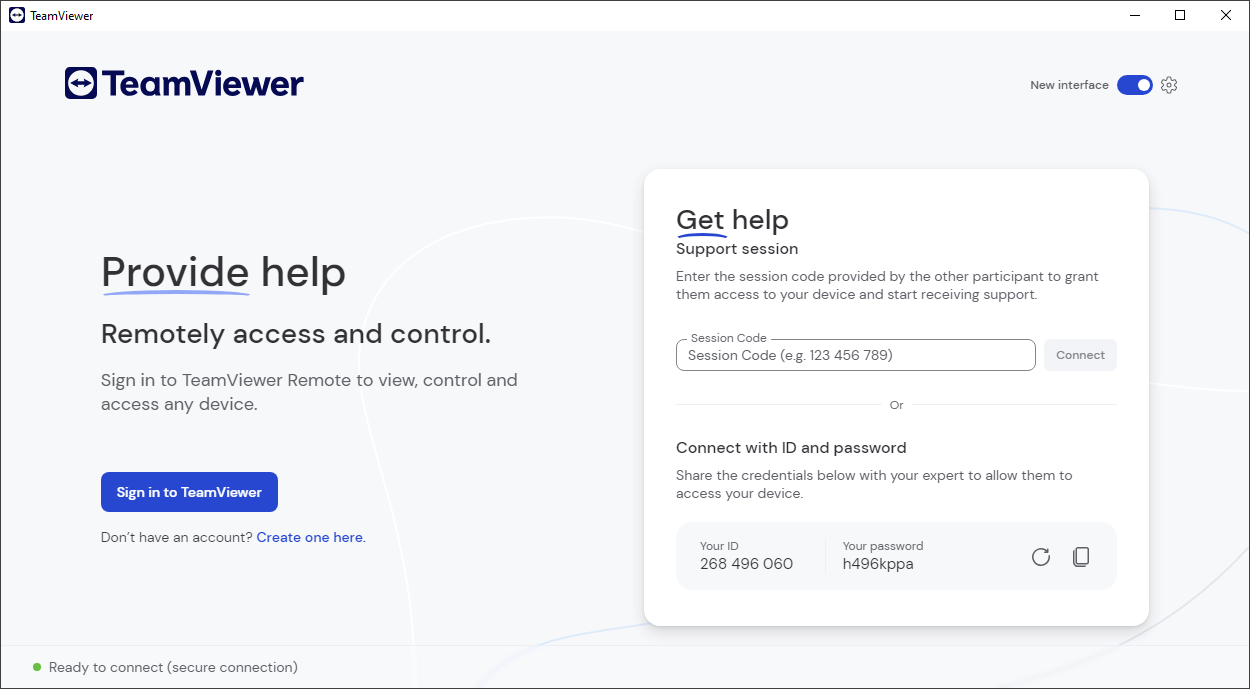
Granting remote access to your computer
You can easily allow an expert to access to your computer by letting them know your TeamViewer ID and the temporary password generated by the software:
-
Upon launching TeamViewer, you will see the unique ID assigned to your device and the password in the lower part of the program’s window. These credentials are necessary for establishing remote connection.
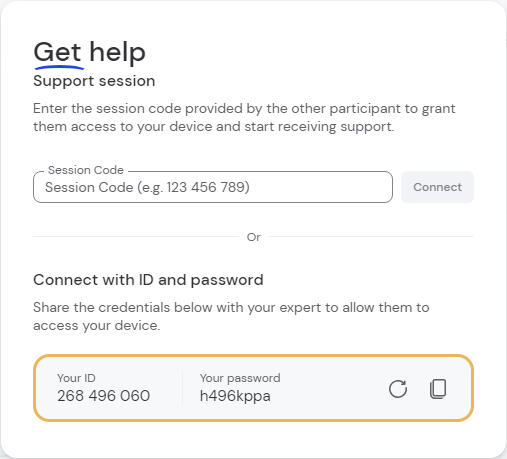
-
Copy your ID and password to the clipboard using the dedicated button on the right. Provide the expert with those copied credentials.
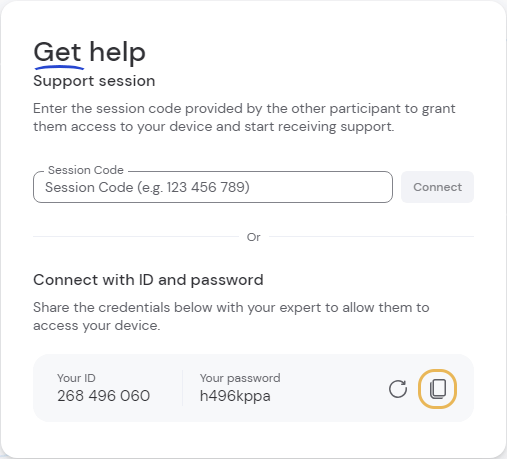
-
The expert will enter your ID in their TeamViewer application and then input the given password to establish connection. Once they are done, you will get a notification about the connection made to your device.
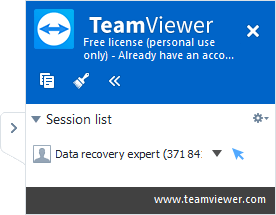
-
When the work is completed, either you or the expert can terminate the connection. It will be enough to close it using the corresponding button or simply exit the TeamViewer application.
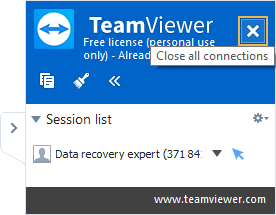
Joining a created remote session
TeamViewer offers another alternative method of connection through remote sessions. In this case, an expert creates a session and shares the unique session code or link for you to join it as a participant:
-
A. If an expert sent you a session code:
Enter the session code you’ve received from the expert into the dedicated field within the program’s interface and hit the "Connect" button.
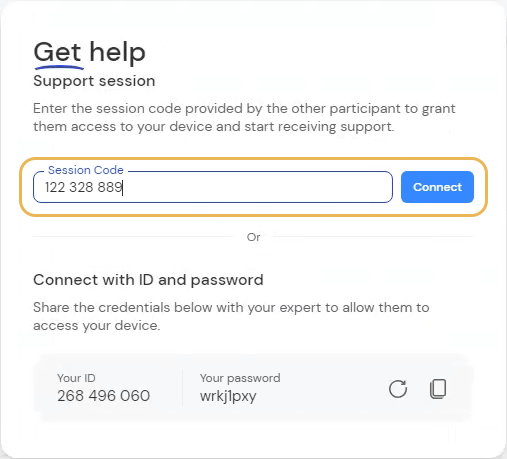
B. If an expert sent you a session link or email invitation:
Open the session link in your browser or click "Join session" in the email. Hit "Open" when prompted to open the link via TeamViewer.
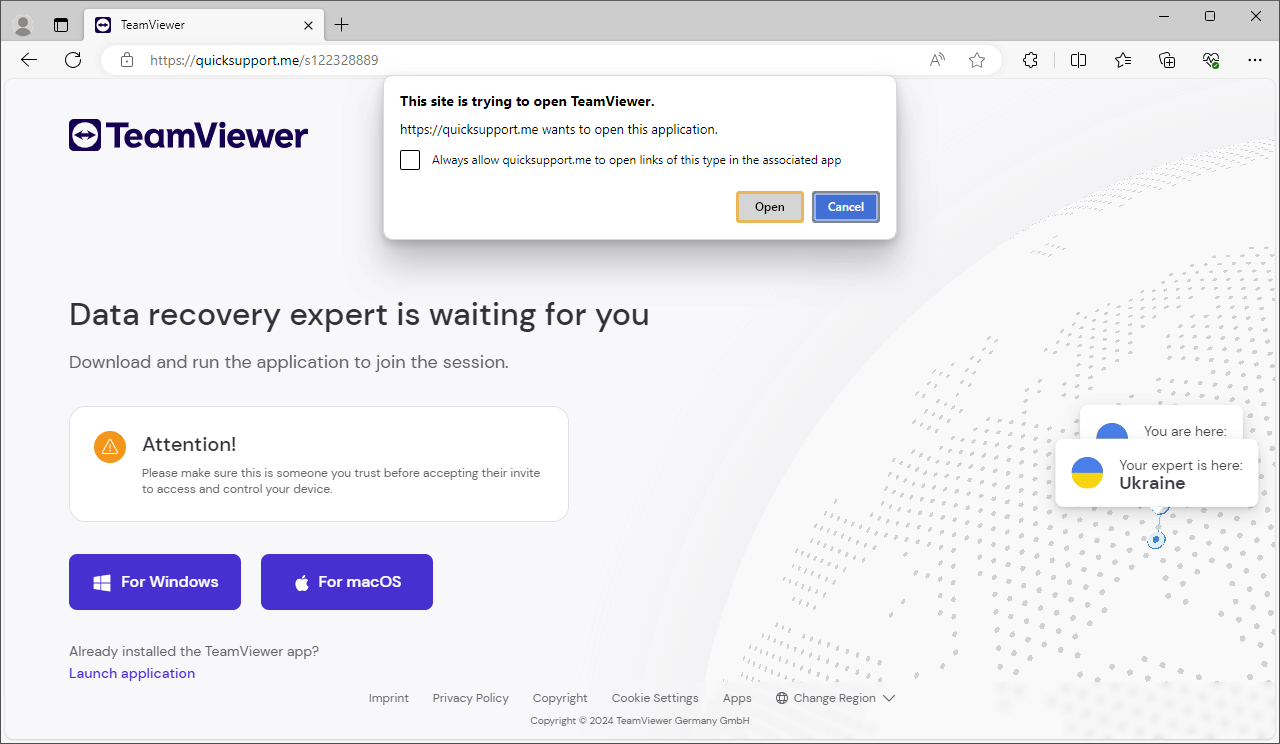
-
In both cases, the expert will be informed that you’re ready to join the session and will be able to initiate it. Once they click "Start session", you will be prompted to accept or decline this session – click "Join session" to express your consent.
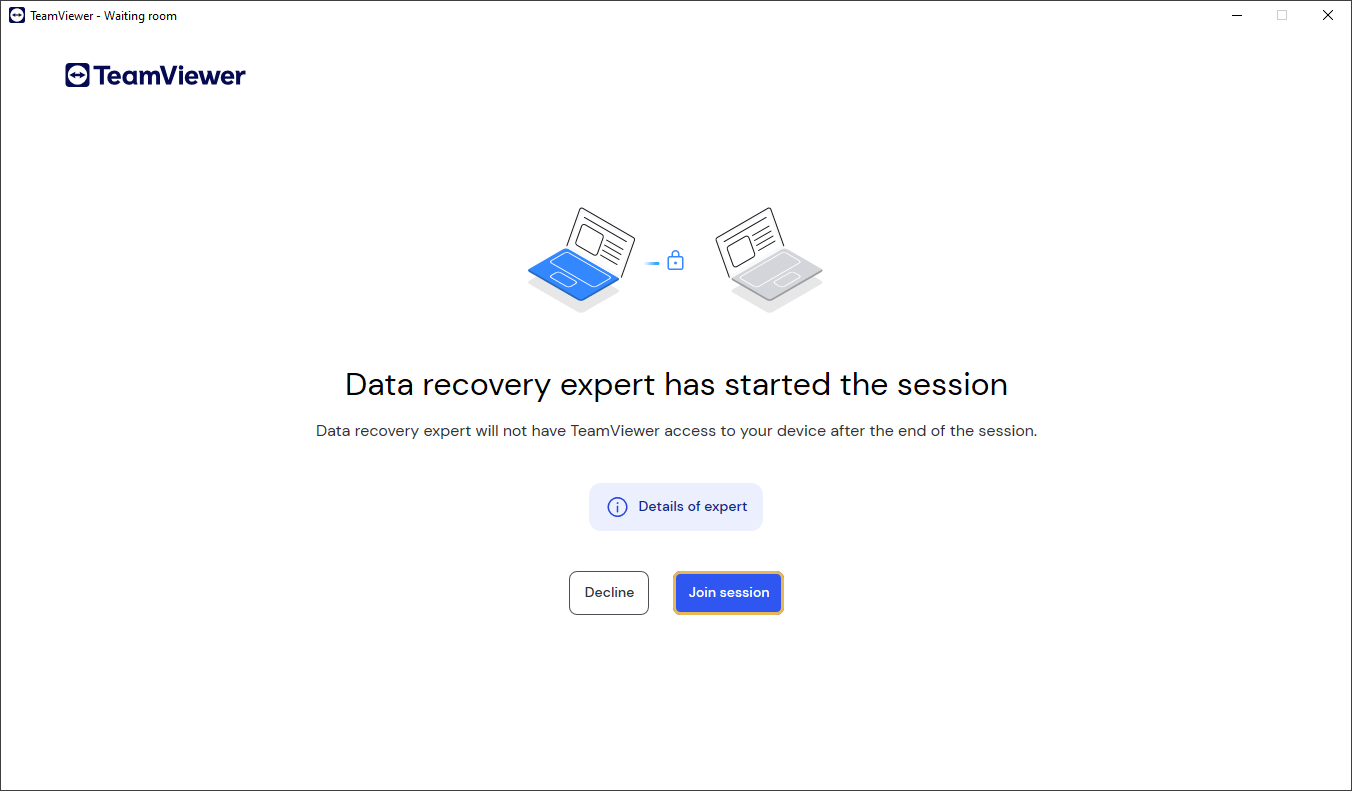
-
Once the connection is established, the expert will be able to perform the necessary tasks on your computer. When finished, either you or the expert can end the session using the "Close all connections" button.
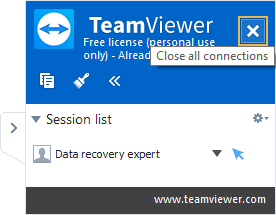
TeamViewer itself also provides extensive user guides, tutorials and other online resources that may assist you mastering the software. Links to them can be found in the Manuals and Knowledge Base sections on the TeamViewer's official website.